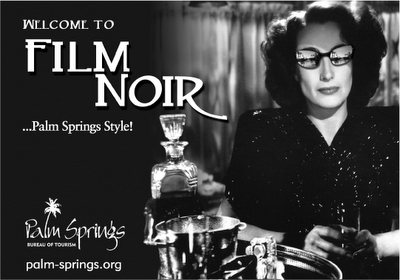8/22/06
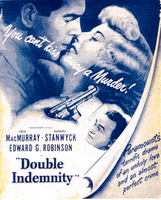 As I mentioned earlier this month, in celebration of what would have been Billy Wilder's centenary, Turner Classics is showing several of his best films and premiering a documentary on the famed director. Following and preceding the doc, which airs twice this evening, is my favorite Wilder film, Double Indemnity. Yes, yes, I know, his other movies, including The Apartment, Some Like It Hot and particularly Sunset Blvd., have their partisans, and I certainly take no issue with those three titles. But to my mind, for many reasons I can't fully explore (or even enumerate) here under current time constraints, Indemnity is hands down Wilder's best all-around movie. (It's a difficult choice, but my second favorite is Ace in the Hole aka The Big Carnival, but that's a subject for a later discussion.)
As I mentioned earlier this month, in celebration of what would have been Billy Wilder's centenary, Turner Classics is showing several of his best films and premiering a documentary on the famed director. Following and preceding the doc, which airs twice this evening, is my favorite Wilder film, Double Indemnity. Yes, yes, I know, his other movies, including The Apartment, Some Like It Hot and particularly Sunset Blvd., have their partisans, and I certainly take no issue with those three titles. But to my mind, for many reasons I can't fully explore (or even enumerate) here under current time constraints, Indemnity is hands down Wilder's best all-around movie. (It's a difficult choice, but my second favorite is Ace in the Hole aka The Big Carnival, but that's a subject for a later discussion.)I've seen Indemnity several times in the past year or so and may have to miss it tonight. Nonetheless, I'm delighted that TCM will be broadcasting this seminal film noir that has for too long been unavailable on DVD. (It was released some time ago on a bare-bones disc that is now "out of print.") Heartened by developments like the release a few years ago of the "Special Collector's Edition" of Sunset Blvd., I would occasionally check sites like Amazon for updates on the status of Double Indemnity's reemergence on DVD, ideally in a deluxe edition befitting its magnificence. In preparation for this post, I looked up Indemnity on IMDb, which happened to
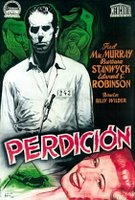 feature new artwork on the site's "main details" page for the film. Holding back a wave of euphoria, I feverishly linked to Amazon and confirmed that the "Universal Legacy Series" version of Double Indemnity will indeed be released two months from today, on August 22, 2006. (The fact that my own birthday is less than a mere six weeks from that date, generous readers, did not factor into my ecstasy in the least.)
feature new artwork on the site's "main details" page for the film. Holding back a wave of euphoria, I feverishly linked to Amazon and confirmed that the "Universal Legacy Series" version of Double Indemnity will indeed be released two months from today, on August 22, 2006. (The fact that my own birthday is less than a mere six weeks from that date, generous readers, did not factor into my ecstasy in the least.)Among other extras, the new DVD features audio commentary from critic, biographer and film historian Richard Schickel, whose slim BFI volume on the film is a little dry and prosaic. Nonetheless, along with the other included commentary, he should provide ample context for the movie. (Schickel's most important insight has been to single out Fred MacMurray as Walter Neff, the insurance agent who realizes too late that he is out of his depth when dealing with Barbara Stanwyck's femme fatale and Edward G. Robinson's claims adjuster. Although most of the critical praise has been heaped upon Stanwyck and Robinson, the performance delivered by MacMurray, who is similarly stunning as Jeff Sheldrake, the entitled cad of The Apartment, is, as pretentious types say, one for the ages.)
As great as news of Double Indemnity's DVD release is, nothing compares to seeing the film on the big screen, or even one of the small big screens at Manhattan's incredible Film Forum, where the film will be screened June 30 and July 1 as part of the repertory theatre's "Essential Wilder" program. (It was with no shortage of cruelty that a friend of mine informed me that, with my own trip to New York scheduled for the 2nd through the 9th, I shall miss this opportunity by a single day.) New York readers, of whom I have none, please take note.
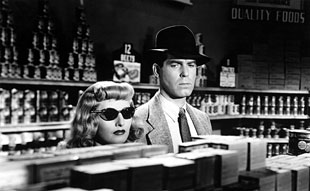
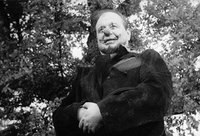
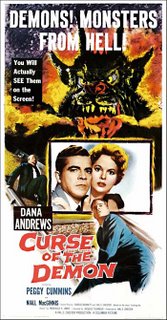
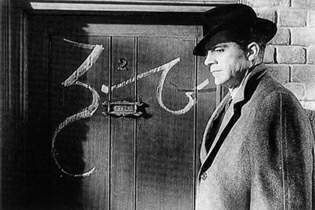


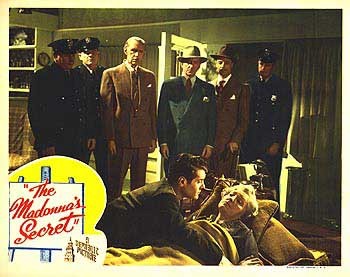 Speaking of T-Men, I would be remiss if I failed to mention its reairing on Turner Classic Movies tomorrow evening as part of month-long celebration of the work of director Anthony Mann, an auteur known foremost as a director of westerns. This
Speaking of T-Men, I would be remiss if I failed to mention its reairing on Turner Classic Movies tomorrow evening as part of month-long celebration of the work of director Anthony Mann, an auteur known foremost as a director of westerns. This 